I am sandwiched in the middle of a basketball team sized family of brilliant siblings so I am, generally speaking, pro-sibling, and perhaps for that reason I love finding portrayals of this unique relationship in SFF. But while it’s common to find children’s books with siblings as joint protagonists, working together, this natural grouping seems to die out abruptly in YA and adult novels. Our protagonists fight and magic and politick their way through realms of fantastic worlds and alternative futures but more commonly they do so as loners, or with friends or romantic partners, rather than with family. Amidst all the orphans and only children and protagonists whose families have been killed off off-screen, where do all our siblings go when we grow up?
Obviously having your protagonist out on their own can be convenient from a narrative point of view, but leaving siblings in to support, antagonise, frustrate and really know our protagonist opens up all kinds of excellent potential for fascinating, nuanced relationships that add to the story even as they complicate it. Here are five SFF books that take on this challenge and run with it.
Court of Fives series by Kate Elliot
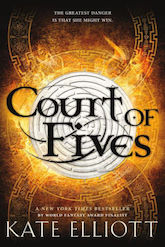 In this series, billed as “Little Women meets American Ninja Warrior in Greco-Roman Egypt,” the main character, Jes, is an athlete with a Commoner mother and an upper class Patron father. Her dream is to compete for the Fives, an athletic competition that offers a chance for glory, but due to the society’s strict rules and her father’s delicate position, the only way she can compete is in secret. When disaster strikes and a ruthless Lord tears Jes’s family apart, she is forced into a much more deadly game of politics and loyalty, and a desperate plan to save her mother and sisters. This story has so much going for it that I love (competitive girls in sports! Intricate political scheming and cultural clashes! Slow burn background magic!) but easily my favourite element was the portrayal of Jes’s family over the course of the trilogy, and particularly her complex, well-realised relationships between her sisters. Elliott really nails the layers of family dynamic, crafting four very distinct sisters with their own character arcs and motivations, and the complex mix of love, combativeness, defensiveness and trust that binds them together.
In this series, billed as “Little Women meets American Ninja Warrior in Greco-Roman Egypt,” the main character, Jes, is an athlete with a Commoner mother and an upper class Patron father. Her dream is to compete for the Fives, an athletic competition that offers a chance for glory, but due to the society’s strict rules and her father’s delicate position, the only way she can compete is in secret. When disaster strikes and a ruthless Lord tears Jes’s family apart, she is forced into a much more deadly game of politics and loyalty, and a desperate plan to save her mother and sisters. This story has so much going for it that I love (competitive girls in sports! Intricate political scheming and cultural clashes! Slow burn background magic!) but easily my favourite element was the portrayal of Jes’s family over the course of the trilogy, and particularly her complex, well-realised relationships between her sisters. Elliott really nails the layers of family dynamic, crafting four very distinct sisters with their own character arcs and motivations, and the complex mix of love, combativeness, defensiveness and trust that binds them together.
The Bone Doll’s Twin by Lynn Flewelling
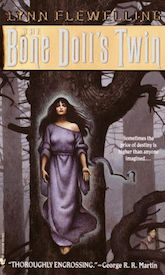 Lynn Flewelling’s Tamir Triad is set in a world where a divine prophecy and a line of warrior queens protected the country until a usurper king claimed his sister’s throne. Determined to ensure his own son’s succession, the mad king kills all of his female relatives to avoid the return of a queen. At the time of Tobin’s birth, a witch casts a dark spell to sacrifice Tobin’s twin brother and give his appearance to his sister to protect her from her murderous uncle, the king. But they are interrupted during the ritual and the baby boy takes a breath before he can be sacrificed, so his spirit is tied to the land. “Brother” spends his days haunting his family, determined to seek revenge for his murder.
Lynn Flewelling’s Tamir Triad is set in a world where a divine prophecy and a line of warrior queens protected the country until a usurper king claimed his sister’s throne. Determined to ensure his own son’s succession, the mad king kills all of his female relatives to avoid the return of a queen. At the time of Tobin’s birth, a witch casts a dark spell to sacrifice Tobin’s twin brother and give his appearance to his sister to protect her from her murderous uncle, the king. But they are interrupted during the ritual and the baby boy takes a breath before he can be sacrificed, so his spirit is tied to the land. “Brother” spends his days haunting his family, determined to seek revenge for his murder.
Brother is an intrinsic feature of the story, a reminder of the evil act that was done by otherwise “good” characters to protect Tobin and bring about his/her eventual return as Queen Tamir. Brother’s disruptive, sometimes malevolent force acts against the characters throughout, and Tobin’s developing relationship with the ghost is the aspect of this story I loved the best. At times frightening, always creepy, sometimes pitiful or even touching, this shadow brotherhood, underpinned by recognisable jealousies and tensions (after all, what happened to Brother was in a way the ultimate “favouritism” by parents), makes these books stand out among their peers.
False Hearts by Laura Lam
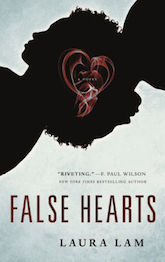 Conjoint twins Taema and Tila are the protagonists of Laura Lam’s near future thriller, False Hearts. The twins were physically separated at age sixteen, when they fled a cult that banned modern medicine in order to get medical assistance for their failing (single) heart. Now living apart from her sister and in very different worlds, Taema is suddenly thrust into a world of danger when Tila shows up on her doorstep, covered in blood and accused of murder.
Conjoint twins Taema and Tila are the protagonists of Laura Lam’s near future thriller, False Hearts. The twins were physically separated at age sixteen, when they fled a cult that banned modern medicine in order to get medical assistance for their failing (single) heart. Now living apart from her sister and in very different worlds, Taema is suddenly thrust into a world of danger when Tila shows up on her doorstep, covered in blood and accused of murder.
The narrative is told in alternating perspectives each chapter from the twins, and their differences in nature are explored both in flashbacks to their youth, when secrets were impossible, and the modern day, where Tila has become involved in a very deadly underground world, and Taema must impersonate her sister to save her life. Their closeness and distance is a crucial part of the narrative as Taema yearns to understand who her sister has become, but also fears what she finds.
Wars of Light and Shadow series by Janny Wurts
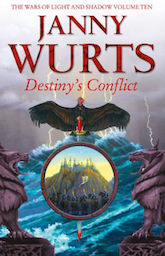 And now for a bit of antagonism—while I’m always up for a siblings-who-care-about-each-other stories, there’s the other kind, too. One of my favourite brothers-as-antagonists exploration is in the Wars of Light and Shadow, by Janny Wurts, where an ancient curse has pushed half-brothers Lysaer and Arithon into deadly foes. This is a vast, vast, did I say vast?, fantasy, intricate and layered, epic in scale and time and scope and challenging in its use of language and intersecting narratives, so it’s not for a light or casual read. In an enjoyable twist of the usual stereotypes about personalities and talents that are coded as “good,” it is not Lysaer, the charming, warm, inspiring Prince of Light, charismatic leader committed to justice and blessed with magical powers relating to heat and light, who is the main protagonist but rather Arithon, Master of Shadows, the reclusive and solitary mage whose talents allow him to create darkness, extreme cold and shaped illusion.
And now for a bit of antagonism—while I’m always up for a siblings-who-care-about-each-other stories, there’s the other kind, too. One of my favourite brothers-as-antagonists exploration is in the Wars of Light and Shadow, by Janny Wurts, where an ancient curse has pushed half-brothers Lysaer and Arithon into deadly foes. This is a vast, vast, did I say vast?, fantasy, intricate and layered, epic in scale and time and scope and challenging in its use of language and intersecting narratives, so it’s not for a light or casual read. In an enjoyable twist of the usual stereotypes about personalities and talents that are coded as “good,” it is not Lysaer, the charming, warm, inspiring Prince of Light, charismatic leader committed to justice and blessed with magical powers relating to heat and light, who is the main protagonist but rather Arithon, Master of Shadows, the reclusive and solitary mage whose talents allow him to create darkness, extreme cold and shaped illusion.
Although the hatred between the brothers is, in this story, a literal magic curse, I love that fundamentally it plays with a family dynamic, where real and perceived wounds and slights can fester into unrelenting, life-altering enmity. Empathetic Arithon is able to see through and break the curse, but Lysaer, faced with the same choices about self-reflection and responsibility for mistakes, chooses not to accept his culpability and to embrace Arithon’s supposed role as the villain in his life. World-wrecking, grand scale projection of real life family dramas. Love it!
A Song of Ice and Fire by George RR Martin
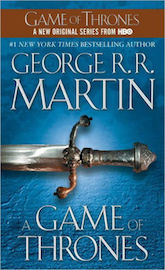 And finally, no discussion of siblings would be complete without an honourable mention to ASoIaF and its vast cast of bonkers siblings, probably incomparable in terms of the sheer quantity of interesting and complicated bonds and tangles that it explores. Barely a string-free child to be found in Westeros; family dynamics is the name of the game (of thrones).
And finally, no discussion of siblings would be complete without an honourable mention to ASoIaF and its vast cast of bonkers siblings, probably incomparable in terms of the sheer quantity of interesting and complicated bonds and tangles that it explores. Barely a string-free child to be found in Westeros; family dynamics is the name of the game (of thrones).
We have everyone’s favourite incestuous twins, Cersei and Jamie, whose close relationship (in every gross sense) has started to bend and fracture; the range of intra-Stark dynamics (the loving Jon and Arya, fractious, childish squabbles between Arya and Sansa, the shifting loyalties inherent in the fraught foster-brother relationship between Robb and Theon, and let’s not forget the jealousies that drove Catelyn and Lysa apart); the abusive Viserys’ use of his sister Daenerys; the sad pressures of Tyrion and Jamie and the murderous enmity of Tyrion and Cersei; Asha and Theon and the bond and rivalries between them, and SO MANY MORE. I mean, I could go on—the Baratheons, the Sand Snakes… these books are jam packed full of family loyalties and loves and fights that are often the cause of world-altering events, and it’s awesome.
A black belt in jujitsu, Sam Hawke lives with her husband and children in Australia. City of Lies is her first novel.










